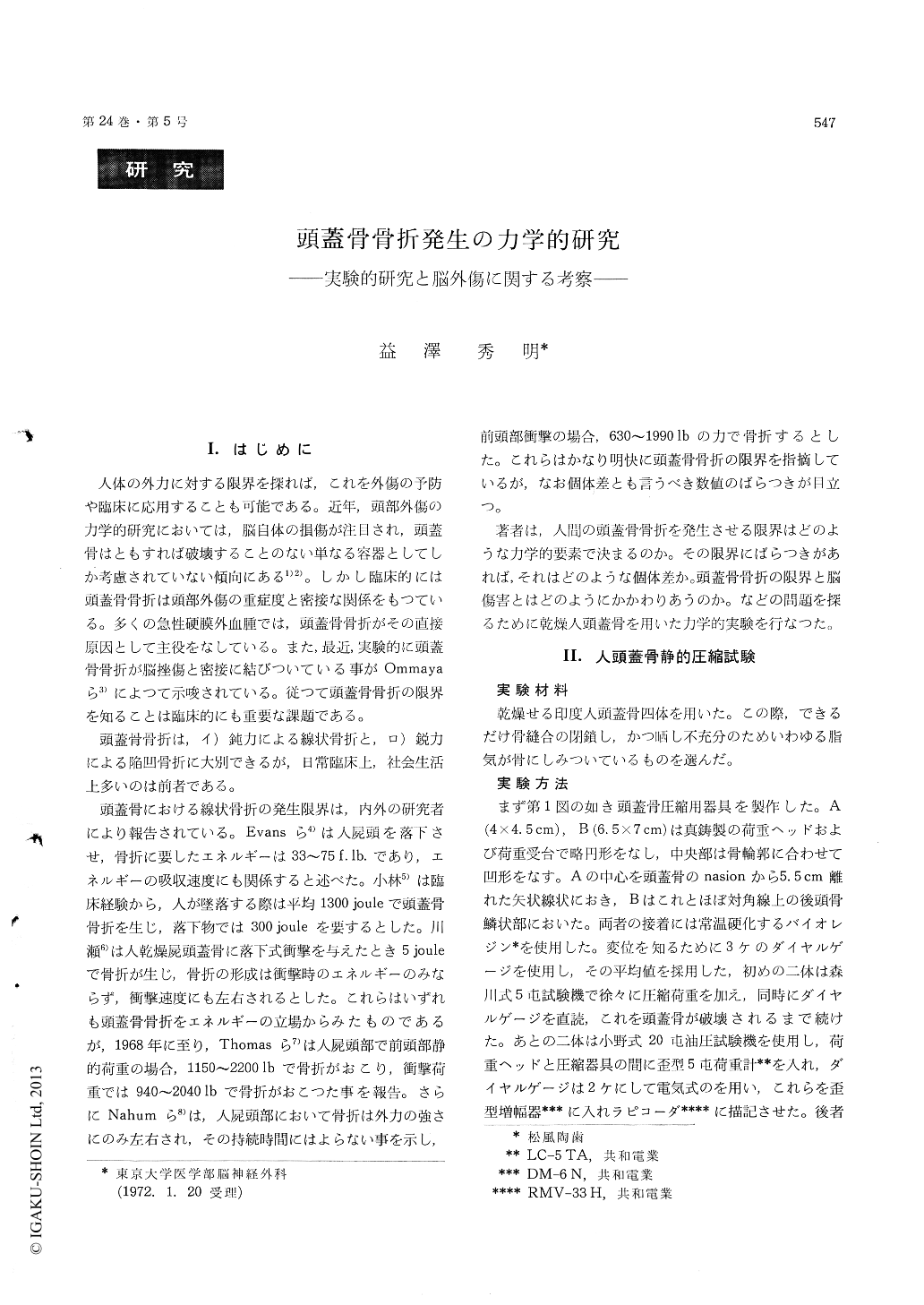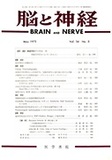Japanese
English
- 有料閲覧
- Abstract 文献概要
- 1ページ目 Look Inside
I.はじめに
人体の外力に対する限界を探れば,これを外傷の予防や臨床に応用することも可能である。近年,頭部外傷の力学的研究においては,脳自体の損傷が注目され,頭蓋骨はともすれば破壊することのない単なる容器としてしか考慮されていない傾向にある1)2)。しかし臨床的には頭蓋骨骨折は頭部外傷の重症度と密接な関係をもつている。多くの急性硬膜外血腫では,頭蓋骨骨折がその直接原因として主役をなしている。また,最近,実験的に頭蓋骨骨折が脳挫傷と密接に結びついている事がOmmayaら3)によつて示唆されている。従つて頭蓋骨骨折の限界を知ることは臨床的にも重要な課題である。
頭蓋骨骨折は,イ)鈍力による線状骨折と,ロ)鋭力による陥凹骨折に大別できるが,日常臨床上,社会生活上多いのは前者である。
1) Four dry skulls were statically compressed in fronto-occipital direction. The forces to produce bone fracture ranged between 600 and 1000 kg weight. The load-deflection curves before fracture gave spring rates of 400 to 900 kg/mm, average 600 kg/mm.
2) Dynamic load tests after the method of Hirakawa et al. showed foamed stylene of 17 mm thickness, among other foamed plastics and rubbers, the best-fit as human scalp simulator.
3) Semi-free fall test on 25 dry human skulls were performed using a strain-gauge load cell and an accelerometer, a DC amplifier and a cathode-ray oscilloscope. Among them 20 received impact at the mid-frontal region. Various damping materials, including the scalp simulator mentioned above were used.
At fracture notching and abrupt lowering of the load curves and high frequency vibration of the acceleration curves were noted. The peak time or rise time at fracture becomes shorter compared to those when fracture does not occur. The dynamic force level for frontal bone fracture was between 400 and 1300 kg peak loads, and independent of acceleration, energy, damping materials, as well aspeak times. The variation in peak loads at the moment of fracture is closely related to the weights of skulls themselves. These results indicate that human skulls have the characteristics of brittle fracture both statically and dynamically.
4) Postulating a head falling brow-down on a hard surface, the loads in this experiment can be considered as the acceleration of the whole head multiplied by the head mass. Then, the threshold for fracture in terms of peak acceleration and peak time is very close to the Wayne State Human Tolerance Curve or H. T. C. Above this threshold, or when higher energy is applied,the head does not give rise to a higher acceleration, but fracture should occur at the same peak acceleration value and the possibly shorter peak time. This means transition to the safe zone of the H. T. C. but clinically severer brain damage is expected. The H. T. C. and the acceleration injury theory should not be applied to the brain damage when fracture occurs. Instead, skull deformation and possibly snap-back of the deformed skull should be considered as the mech-anism of brain damage associated with skull fracture.

Copyright © 1972, Igaku-Shoin Ltd. All rights reserved.


